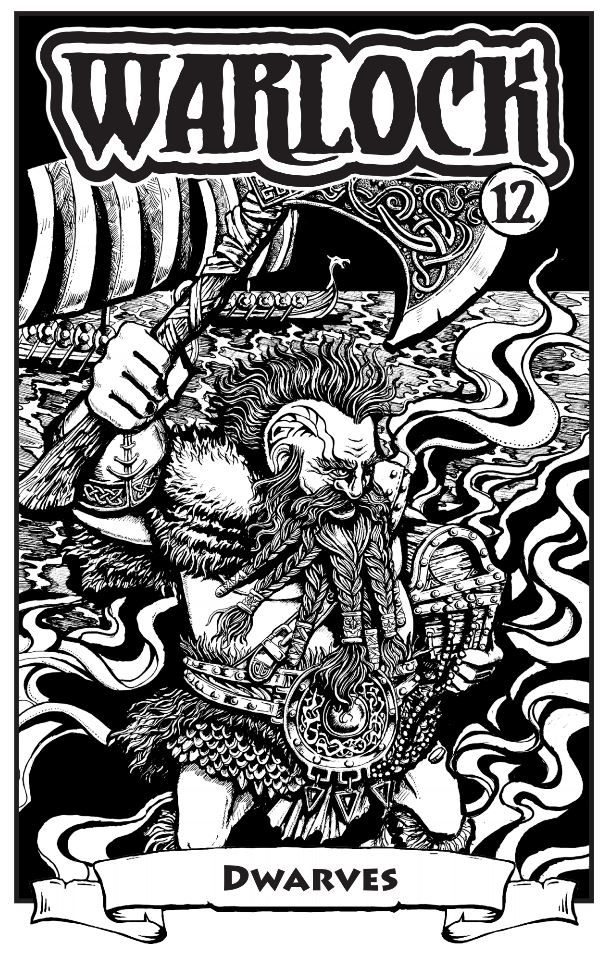 The Ironcrags rise out of central Midgard, a stony sword thrust toward the heavens and the homeland of numerous dwarven clans that migrated from the Northlands. They found the mountains rich and verdant and established many scores of canton strongholds throughout the peaks and valleys. While dwarven culture became more urbane and political, the dwarves never lost their taste for combat and martial activities. Mercenary companies created by younger dwarves and aging veterans unwilling to retire quietly march out early each spring to earn fortunes and hard-fought experience on the battlefield. The cantons benefit from those who return, gaining an influx of blooded veterans, strategy, and treasure.
The Ironcrags rise out of central Midgard, a stony sword thrust toward the heavens and the homeland of numerous dwarven clans that migrated from the Northlands. They found the mountains rich and verdant and established many scores of canton strongholds throughout the peaks and valleys. While dwarven culture became more urbane and political, the dwarves never lost their taste for combat and martial activities. Mercenary companies created by younger dwarves and aging veterans unwilling to retire quietly march out early each spring to earn fortunes and hard-fought experience on the battlefield. The cantons benefit from those who return, gaining an influx of blooded veterans, strategy, and treasure.
Mustering and Marching
Never ones to shy away from combat, Ironcrag mercenary companies gather in the canton of Tijano, mustering and recording their heraldry with the priests of Volund before marching out to serve under the banners of the Septime Cities throughout that region’s Season of War.
While this tradition does provide valuable combat experience, it also provides dwarves the opportunity to take captives, pressing them into service as thralls for 10 years. The custom discourages others from attacking the Ironcrags, both for fear of becoming a thrall and for concern on the safety of countrymen held as thralls. Thralls are fed and cared for, worked hard but not beaten, generally receiving a tattoo or brand on the shoulder to mark their status, and live a decade of hard labor before being released. Dwarven law dictates all slaves have the right to sustenance, shelter, and life, and they are permitted to complain to a magistrate if denied food or to accuse a dwarf of killing a slave.
As warriors, the Ironcrag Free Companies enjoy excellent reputations for steadfast dedication, the ability to endure harsh conditions without complaint, and being ferocious combatants. Their shorter stature almost never plays a role, and they often match their allies’ marching pace while wearing heavier armor. However, dwarven mercenaries are also known for using any advantage they can find on the battlefield. They love using the terrain to their advantage and performing night operations, using their darkvision and discipline to work from the shadows when an enemy might otherwise be blind.
Tools of the Trade
Two new weapons presented here, the chain hook and the Dolen axe, offer maneuvers to make combat more interesting, called Weapon Options. Weapon Options appear in Midgard Heroes Handbook and unless specified otherwise can be used by any character as long as they’re wielding the appropriate weapon and are proficient with it. If a maneuver requires a creature to make a saving throw, the DC equals 8 + the attacker’s proficiency bonus + the attacker’s Strength or Dexterity modifier (attacker’s choice). Unless specified, these maneuvers have only their listed effect and don’t deal weapon damage.
Chain Hook
This unusual and multipurpose weapon greatly resembles a robust, utilitarian interpretation of the Cathayan yawanga. Its development and use among canton mercenary companies is uncertain but may have traveled west with merchants or explorers. Consisting of 6–9 feet of hefty chain and terminating in an iron weight set with a bladed hook, this weapon can be used to attack, unhorse, and even occasionally disarm opponents.
You have disadvantage when attacking creatures within 5 feet of you.
Weapon Option: Disarm
When a creature attacks you with a weapon, you may use your reaction to catch their weapon and attempt to disarm them. Make an attack roll with your chain hook. If the result of this roll equals or exceeds their attack roll, their attack misses, and they must succeed on a Strength saving throw or drop their weapon.
Weapon Option: Trip
As an attack while you are wielding a chain hook, you may entangle your opponent’s legs, attempting to trip them. Make an attack roll against a Large or smaller creature. If the attack hits, the creature must succeed on a Strength saving throw or fall prone. If mounted, they have advantage on this saving throw; failure indicates they are pulled to the ground, prone.
Special Material: Soulbound Steel
Steel forged with the ashes of the fallen dead, first pickled in ale and cremated through special ritual to Ninkash, creates a special alloy known as soulbound steel, said to contain a sliver of the spirit of the warrior rendered into ashes. The strong, flexible metal has a light grey color and a beautiful, powdery finish, sometimes worked into frost-like patterns. Armor is not usually made of soulbound steel although rarely a buckler or shield is forged. Other items not primarily of metal are not meaningfully affected by being partially made of soulbound steel: a longsword can be a soulbound weapon while a staff cannot. When wielding a weapon made from soulbound steel, once per long rest, the bearer may use their reaction to roll a saving throw with advantage against a mind-affecting spell, effect, or ability. A character can only benefit from a soulbound steel item once per long rest, regardless of how many they possess. These weapons cost an additional 500 gp to create…
___
Read more of this and other great articles in Warlock, only on Patreon!


